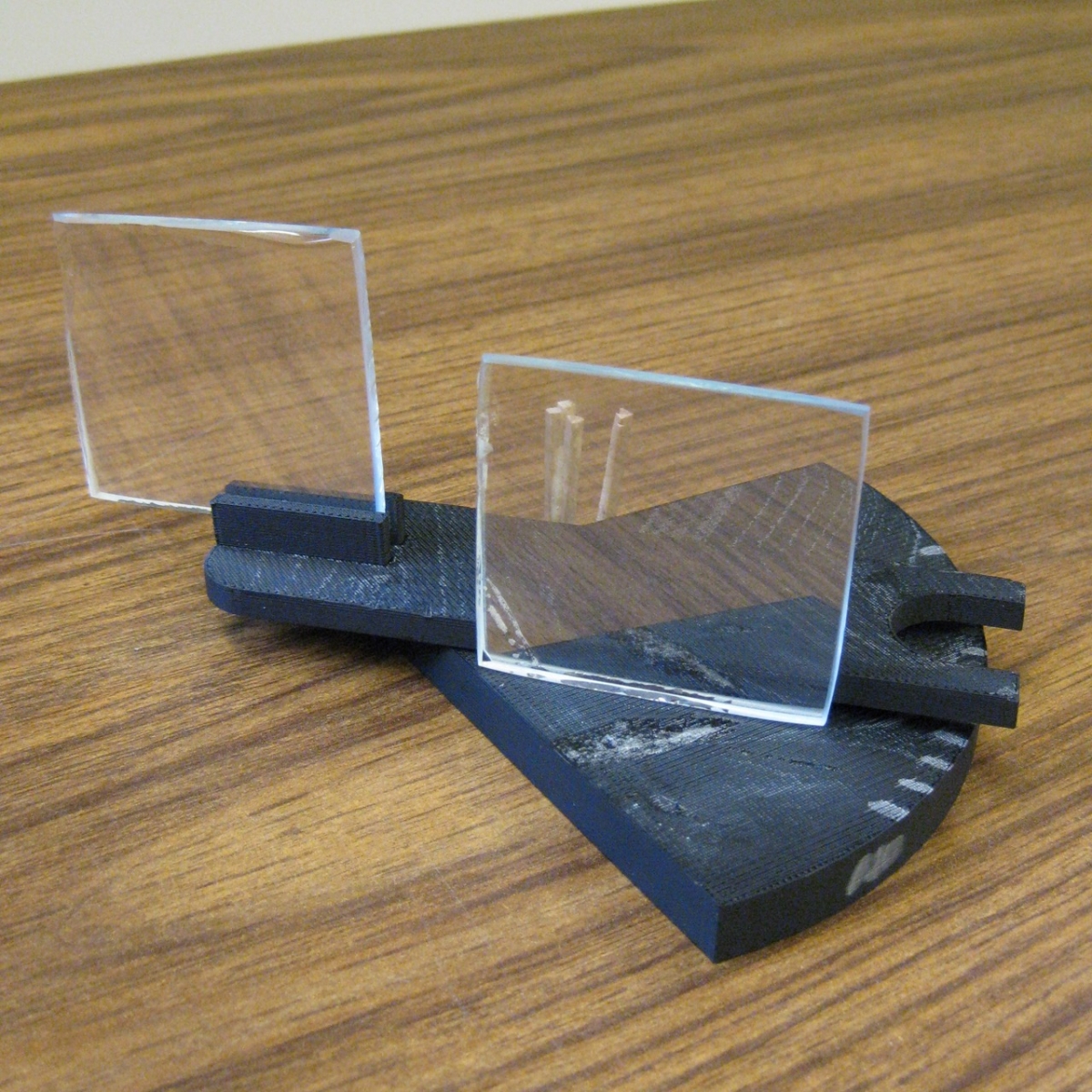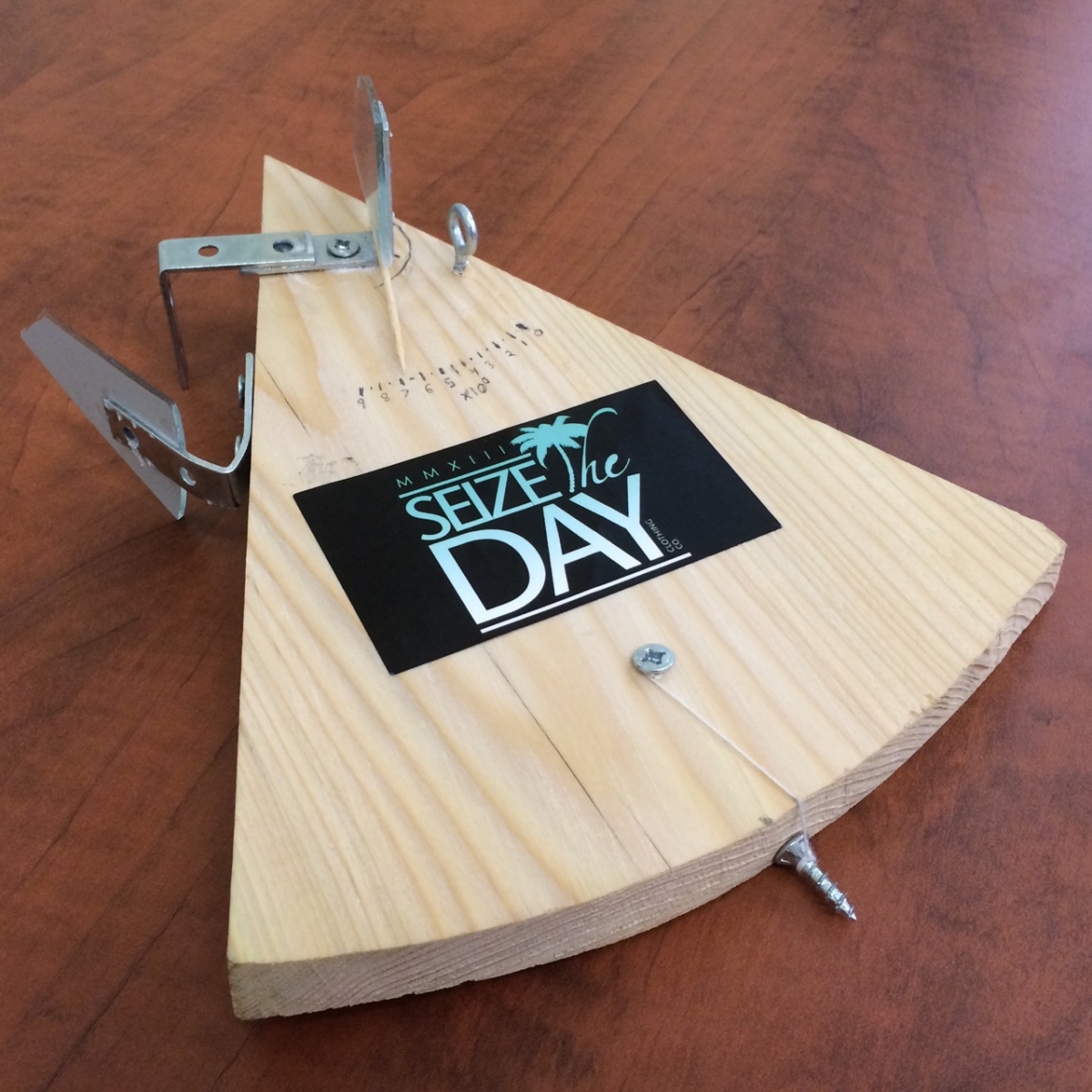- About MAA
- Membership
- MAA Publications
- Periodicals
- Blogs
- MAA Book Series
- MAA Press (an imprint of the AMS)
- MAA Notes
- MAA Reviews
- Mathematical Communication
- Information for Libraries
- Author Resources
- Advertise with MAA
- Meetings
- Competitions
- Programs
- Communities
- MAA Sections
- SIGMAA
- MAA Connect
- Students
- MAA Awards
- Awards Booklets
- Writing Awards
- Teaching Awards
- Service Awards
- Research Awards
- Lecture Awards
- Putnam Competition Individual and Team Winners
- D. E. Shaw Group AMC 8 Awards & Certificates
- Maryam Mirzakhani AMC 10 A Awards & Certificates
- Two Sigma AMC 10 B Awards & Certificates
- Jane Street AMC 12 A Awards & Certificates
- Akamai AMC 12 B Awards & Certificates
- High School Teachers
- News
You are here
Bridging the Gap Between Theory and Practice: Astronomical Instruments - Two Sextants
Two Sextants
A sextant is an instrument used to measure the angle between two objects, though especially between a heavenly body and the horizon; that is, the heavenly body's altitude. As such, a sextant serves the same purpose as a quadrant. However, the sextant has a much greater accuracy than a quadrant. In particular, a small sextant offers greater accuracy than a large quadrant.
For more information about the sextant, the Starry Messenger Project, developed by the Whipple Museum of the History of Science and the Department of History and Philosophy of Science at Cambridge University, has a website dedicated to the quadrant and the sextant at http://www.hps.cam.ac.uk/starry/quadrant.html.
Two groups undertook to design a sextant, one in Fall 2010 and one in Fall 2014.
The sextant designed in Fall 2010 was constructed from two mirrors and parts made using the 3D printer.

Figure 7. Student-built sextant from Fall 2010 Ancient Mathematical Astronomy class (photograph by Toke Knudsen)
The above photo shows the sextant from Fall 2010. The sextant did not work. The parts of the instrument could not move as they should, and it had no working sight.
The sextant designed in Fall 2014 was made of wood and metal parts. This sextant was designed and constructed entirely by the students, who used their own tools and material for the construction part.

Figure 8. Student-built sextant from Fall 2014 Ancient Mathematical Astronomy class (photograph by Toke Knudsen)
The above photo shows the sextant from Fall 2014. A screw is suspended by a string from the base of the instrument. When the string covers the pencil mark on the circular edge of the base, the instrument is aligned correctly. The mirror at the top can then be adjusted, and the toothpick attached to it marks an angle. The metal loop at right functions as a sight. The sextant works as it should. The students estimated that its accuracy is around 5 degrees.
Toke Knudsen (State University of New York at Oneonta), "Bridging the Gap Between Theory and Practice: Astronomical Instruments - Two Sextants," Convergence (May 2015)




